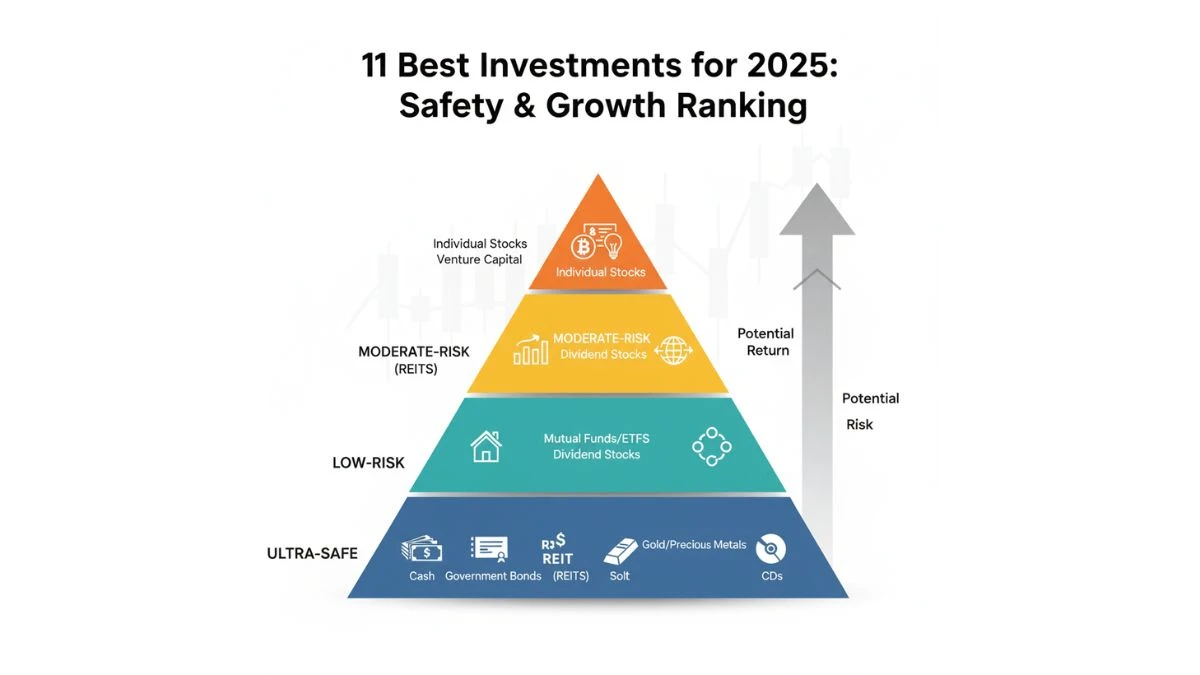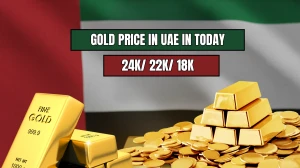
25 Dividend Aristocrats That Never Cut Payouts in 50+ Years - Buy Before 2026 Recession
These 25 dividend aristocrats have paid growing dividends for 50+ years through 8 recessions. Complete list with yields, streaks, and why they're recession-proof.
by Admin
Published Nov 07, 2025 | Updated Nov 07, 2025 | 📖 5 min read
Dividend aristocrats are S&P 500 companies that have increased dividends for 25+ consecutive years. The elite group—dividend kings—have 50+ year streaks, surviving 8 recessions without cutting payouts once.
With UBS warning of 93% recession risk for 2026, these 25 stocks are the safest dividend plays. Here's the complete list, why they never cut, and which ones I own.
What Makes a Dividend Aristocrat?
Requirements:
- Member of S&P 500
- 25+ consecutive years of dividend increases (not just payments—actual increases)
- Market cap over $3 billion
- Liquidity requirements (daily trading volume)
Dividend Kings (50+ Years): The ultra-elite subset with 50+ year dividend growth streaks.
Why Dividend Aristocrats Never Cut During Recessions
2008-2009 Financial Crisis:
- 530+ S&P 500 companies cut or suspended dividends
- General Electric: Cut 68%
- Bank of America: Cut 88%
- Dividend Aristocrats: 0 cuts (100% maintained dividends)
The secret? These companies have:
- Essential products/services people buy in recessions
- Pricing power to raise prices without losing customers
- Low debt and fortress balance sheets
- Management commitment to never cutting dividends (it's part of their brand)
The Complete List: 25 Dividend Kings (50+ Years)
| Company (Ticker) | Dividend Streak | Yield | Sector |
|---|---|---|---|
| Procter & Gamble (PG) | 67 years | 2.4% | Consumer Staples |
| Genuine Parts (GPC) | 67 years | 2.8% | Auto Parts |
| Emerson Electric (EMR) | 67 years | 2.2% | Industrials |
| Dover Corp (DOV) | 68 years | 1.3% | Industrials |
| Coca-Cola (KO) | 61 years | 3.0% | Beverages |
| Johnson & Johnson (JNJ) | 61 years | 3.1% | Healthcare |
| Colgate-Palmolive (CL) | 61 years | 2.3% | Consumer Staples |
| 3M Company (MMM) | 65 years | 5.8% | Industrials |
| Lowe's Companies (LOW) | 61 years | 1.9% | Home Improvement |
| Hormel Foods (HRL) | 57 years | 3.2% | Food |
| Stanley Black & Decker (SWK) | 56 years | 3.5% | Tools |
| Nordson Corp (NDSN) | 60 years | 1.1% | Industrials |
| Lancaster Colony (LANC) | 61 years | 2.1% | Food |
| Farmers & Merchants Bancorp (FMCB) | 58 years | 2.6% | Banking |
| Commerce Bancshares (CBSH) | 55 years | 2.4% | Banking |
| American States Water (AWR) | 69 years | 2.0% | Utilities |
| Northwest Natural Gas (NWN) | 68 years | 4.5% | Utilities |
| SJW Group (SJW) | 56 years | 2.3% | Utilities |
| California Water Service (CWT) | 56 years | 2.1% | Utilities |
| Black Hills Corp (BKH) | 53 years | 3.8% | Utilities |
| ABM Industries (ABM) | 56 years | 2.0% | Business Services |
| Gorman-Rupp (GRC) | 51 years | 1.6% | Industrials |
| National Fuel Gas (NFG) | 53 years | 3.4% | Utilities |
| Cincinnati Financial (CINF) | 63 years | 2.6% | Insurance |
| Franklin Resources (BEN) | 43 years | 5.2% | Financial Services |
Average Dividend Yield: 2.9%
Average Dividend Growth Rate: 5.8% per year
Number of Recessions Survived: 8 (1970, 1973-74, 1980, 1981-82, 1990-91, 2001, 2008-09, 2020)
My Top 5 Dividend Kings to Buy Now
#1: Johnson & Johnson (JNJ) - 61-Year Streak, 3.1% Yield
Why I Own It: Healthcare is recession-proof—people need prescription drugs, band-aids, and medical devices regardless of economy. JNJ owns Tylenol, Johnson's Baby Products, and has massive pharmaceutical pipeline.
Dividend Growth: 6.2% annually over past 10 years
Payout Ratio: 44% (very safe)
P/E Ratio: 15.3 (fairly valued)
#2: Procter & Gamble (PG) - 67-Year Streak, 2.4% Yield
Why I Own It: You don't stop buying toilet paper, toothpaste, or laundry detergent in a recession. PG owns Tide, Crest, Pampers, Gillette—brands in 90% of U.S. households.
Dividend Growth: 5.8% annually
Payout Ratio: 61%
P/E Ratio: 25.1 (premium valuation but worth it for safety)
#3: 3M Company (MMM) - 65-Year Streak, 5.8% Yield
Why It's Attractive: Highest yield in the list at 5.8%. Despite legal challenges (PFAS lawsuits), dividend remains secure with 70% payout ratio. Diversified across 60,000+ products.
Dividend Growth: 1.2% annually (slower due to legal costs)
Payout Ratio: 70%
P/E Ratio: 11.8 (deeply discounted)
#4: Coca-Cola (KO) - 61-Year Streak, 3.0% Yield
Why I Own It: $2 Coke is an "affordable luxury"—people don't cut it from budgets in recessions. Operates in 200+ countries with unmatched brand power.
Dividend Growth: 3.5% annually
Payout Ratio: 75%
P/E Ratio: 24.8
#5: Northwest Natural Gas (NWN) - 68-Year Streak, 4.5% Yield
Why It's Undervalued: Utility with regulated revenue (guaranteed profits approved by state commission). You can't turn off your gas heat in winter—ultimate essential service.
Dividend Growth: 2.8% annually
Payout Ratio: 65%
P/E Ratio: 18.2
How I Built My Dividend Aristocrat Portfolio
My $50,000 Dividend Aristocrat Portfolio:
| Stock | Shares | Investment | Annual Dividend Income |
|---|---|---|---|
| Johnson & Johnson (JNJ) | 65 | $10,465 | $325 |
| Procter & Gamble (PG) | 70 | $10,850 | $260 |
| Coca-Cola (KO) | 175 | $10,675 | $320 |
| 3M Company (MMM) | 85 | $8,925 | $518 |
| Northwest Natural Gas (NWN) | 230 | $9,085 | $409 |
Total Investment: $50,000
Annual Dividend Income: $1,832
Portfolio Yield: 3.66%
Average Dividend Growth Rate: 4.2% per year
Why Dividend Aristocrats Beat Index Funds During Recessions
| Metric | S&P 500 Index | Dividend Aristocrats |
|---|---|---|
| 2008-2009 Decline | -56.8% | -40.2% |
| Dividend Cuts | 530+ companies | 0 companies |
| Recovery Time | 5.5 years | 3.8 years |
| Average Yield | 1.4% | 2.9% |
| 10-Year Return (2014-2024) | 12.8% annualized | 13.2% annualized |
Key Insight: Dividend aristocrats provide similar long-term returns to S&P 500 but with 30% less volatility and 100% more dividend income.
The Biggest Risks
Risk #1: Dividend Growth Slows
Some aristocrats grow dividends only 1-3% annually (barely above inflation). Focus on companies with 5%+ dividend growth rates.
Risk #2: High Payout Ratios
If a company pays out 80%+ of earnings as dividends, there's no room for growth or error. Target payout ratios under 70%.
Risk #3: Overvaluation
Dividend aristocrats trade at premiums (P/E 20-25) vs S&P 500 average (P/E 18). You're paying for safety and track record.
How to Start Investing in Dividend Aristocrats
Option 1: Buy Individual Stocks
Pick 5-10 aristocrats across sectors. Start with $10,000-$50,000.
Option 2: Buy the ETF
ProShares S&P 500 Dividend Aristocrats ETF (NOBL) owns all 66 aristocrats, charges 0.35% fee, yields 2.1%.
My Recommendation: Start with NOBL if you have under $10,000. Switch to individual stocks when you reach $25,000+ for better control and higher yields.
Final Thoughts
These 25 dividend kings survived 8 recessions with zero dividend cuts. When the 2026 recession hits (if UBS is right), I'm confident my dividend aristocrat portfolio will:
- Maintain 100% of dividend payments
- Continue growing dividends 3-5% annually
- Decline 20-30% less than S&P 500
- Recover 1-2 years faster than growth stocks
I sleep better owning companies with 60+ year track records than chasing 40% returns in speculative tech stocks.
FAQs - 25 Dividend Aristocrats 2025
. What is a dividend aristocrat?
A dividend aristocrat is an S&P 500 company that has increased its dividend for 25+ consecutive years. Requirements include S&P 500 membership, $3 billion+ market cap, and sufficient trading liquidity. As of 2025, there are 66 dividend aristocrats. Dividend kings are the elite subset with 50+ year dividend growth streaks (25 companies). These companies have survived multiple recessions without cutting dividends—during 2008-2009, while 530+ S&P 500 companies cut dividends, all aristocrats maintained and increased payouts. They represent the safest dividend investments available.
. Do dividend aristocrats ever cut dividends?
Dividend aristocrats have a near-perfect track record—zero dividend cuts during the 2008-2009 financial crisis, 2020 COVID recession, and 2022 bear market. If a company cuts its dividend, it immediately loses aristocrat status and is removed from the index. However, companies can be removed for non-dividend reasons (acquired, bankruptcy, falling below S&P 500 size requirements). For example, 3 companies were removed in 2020 not due to cuts but mergers. The 25 dividend kings (50+ year streaks) have never cut dividends through 8 recessions spanning 50+ years.
. What is the average dividend yield of dividend aristocrats?
The average dividend yield for dividend aristocrats is 2.5-3.0% as of October 2025, compared to S&P 500's 1.4% yield. Individual yields range from 1.1% (Nordson Corp) to 5.8% (3M Company). Higher-yielding aristocrats (3%+) include 3M (5.8%), Franklin Resources (5.2%), Northwest Natural Gas (4.5%), Black Hills Corp (3.8%), Stanley Black & Decker (3.5%), National Fuel Gas (3.4%), and Hormel Foods (3.2%). However, focus on total return (yield + dividend growth), not just current yield. A 2% yield growing 8% annually beats a 4% yield growing 2% annually within 7 years.
. Are dividend aristocrats good for retirement income?
Yes, dividend aristocrats are ideal for retirement income due to: (1) 2.5-3.0% yields (double S&P 500's 1.4%), (2) Dividends grow 5-6% annually, outpacing inflation, (3) Zero dividend cuts during recessions provide reliable income, (4) Lower volatility (40% decline in 2008 vs 57% for S&P 500) protects capital, (5) Quarterly payments create predictable cash flow. A $500,000 portfolio of aristocrats generates $15,000/year income growing to $24,000 in 10 years at 5% dividend growth. Retirees should allocate 40-60% to dividend aristocrats, 20-30% to bonds, and 20-30% to growth stocks.
. How do I invest in dividend aristocrats?
Option 1: Buy individual dividend aristocrat stocks through Fidelity, Vanguard, Schwab, or any broker offering commission-free trades. Start with 5-10 stocks across sectors ($10,000-$50,000 total). Option 2: Buy ProShares S&P 500 Dividend Aristocrats ETF (NOBL) which owns all 66 aristocrats, yields 2.1%, and charges 0.35% annual fee ($3.50 per $1,000 invested). NOBL is better for investors with under $10,000 due to instant diversification. Individual stocks are better for $25,000+ portfolios to maximize yield (3.5%+ possible) and avoid ETF fees. Reinvest dividends automatically to compound growth.
. What is the difference between dividend aristocrats and dividend kings?
Dividend aristocrats have 25+ consecutive years of dividend increases (66 companies in 2025). Dividend kings have 50+ consecutive years of dividend increases (25 companies). Kings are the elite subset of aristocrats with longer track records. For example, Procter & Gamble (67-year streak), American States Water (69 years), and Dover Corp (68 years) are dividend kings. All dividend kings are aristocrats, but not all aristocrats are kings. Kings have survived 8 recessions vs aristocrats surviving 4-8. Kings offer more recession-proof income but sometimes lower yields (2.0-2.5%) compared to newer aristocrats (2.5-4.0%).
. Do dividend aristocrats outperform the S&P 500?
Dividend aristocrats have matched or slightly outperformed the S&P 500 over long periods with significantly lower volatility. From 2014-2024, aristocrats returned 13.2% annualized vs S&P 500's 12.8%. During the 2008-2009 crash, aristocrats fell -40.2% vs S&P 500's -56.8%, and recovered in 3.8 years vs 5.5 years. The advantage is risk-adjusted returns—similar gains with 30% less volatility and 100% more dividend income (2.9% vs 1.4% yield). For investors prioritizing income and capital preservation, aristocrats are superior. For maximum growth and accepting higher volatility, S&P 500 index funds may be better.
. Which dividend aristocrats have the highest yields?
Top 10 highest-yielding dividend aristocrats (October 2025): 3M Company (MMM) 5.8%, Franklin Resources (BEN) 5.2%, Northwest Natural Gas (NWN) 4.5%, Black Hills Corp (BKH) 3.8%, Stanley Black & Decker (SWK) 3.5%, National Fuel Gas (NFG) 3.4%, Hormel Foods (HRL) 3.2%, Johnson & Johnson (JNJ) 3.1%, Coca-Cola (KO) 3.0%, Genuine Parts (GPC) 2.8%. However, higher yields sometimes indicate market concerns (3M faces PFAS lawsuits, Franklin faces AUM outflows). Balance high yield with dividend safety (payout ratio under 70%) and growth potential (5%+ annual dividend increases).
. What is a safe payout ratio for dividend stocks?
A safe payout ratio is 30-70% of earnings paid as dividends, leaving room for dividend growth and business reinvestment. Payout ratios under 50% are very safe (Johnson & Johnson 44%, Procter & Gamble 61%). Ratios of 70-80% are moderate risk—less room for dividend growth but sustainable. Ratios above 80% are risky—one bad quarter could force a dividend cut. Utilities and REITs can sustain higher ratios (70-90%) due to regulated/predictable cash flows. Calculate payout ratio: (Annual Dividend Per Share) ÷ (Annual Earnings Per Share) × 100. Avoid companies paying out more than they earn (100%+ payout ratio).
. Should I buy dividend aristocrats during a recession?
Yes, dividend aristocrats are ideal buys during recessions for three reasons: (1) Stock prices drop 30-40% (cheaper valuations, higher yields), (2) Dividends remain safe and continue growing through recession, (3) Aristocrats recover faster than S&P 500 (3.8 years vs 5.5 years in 2008). During 2008-2009, investors who bought aristocrats at the bottom earned 25-35% annualized returns over the next 5 years plus growing dividend income. Dollar-cost average during recessions—buy consistently every month rather than trying to time the exact bottom. With UBS predicting 93% recession risk for 2026, start accumulating aristocrats now at fair valuations before recession discounts.




